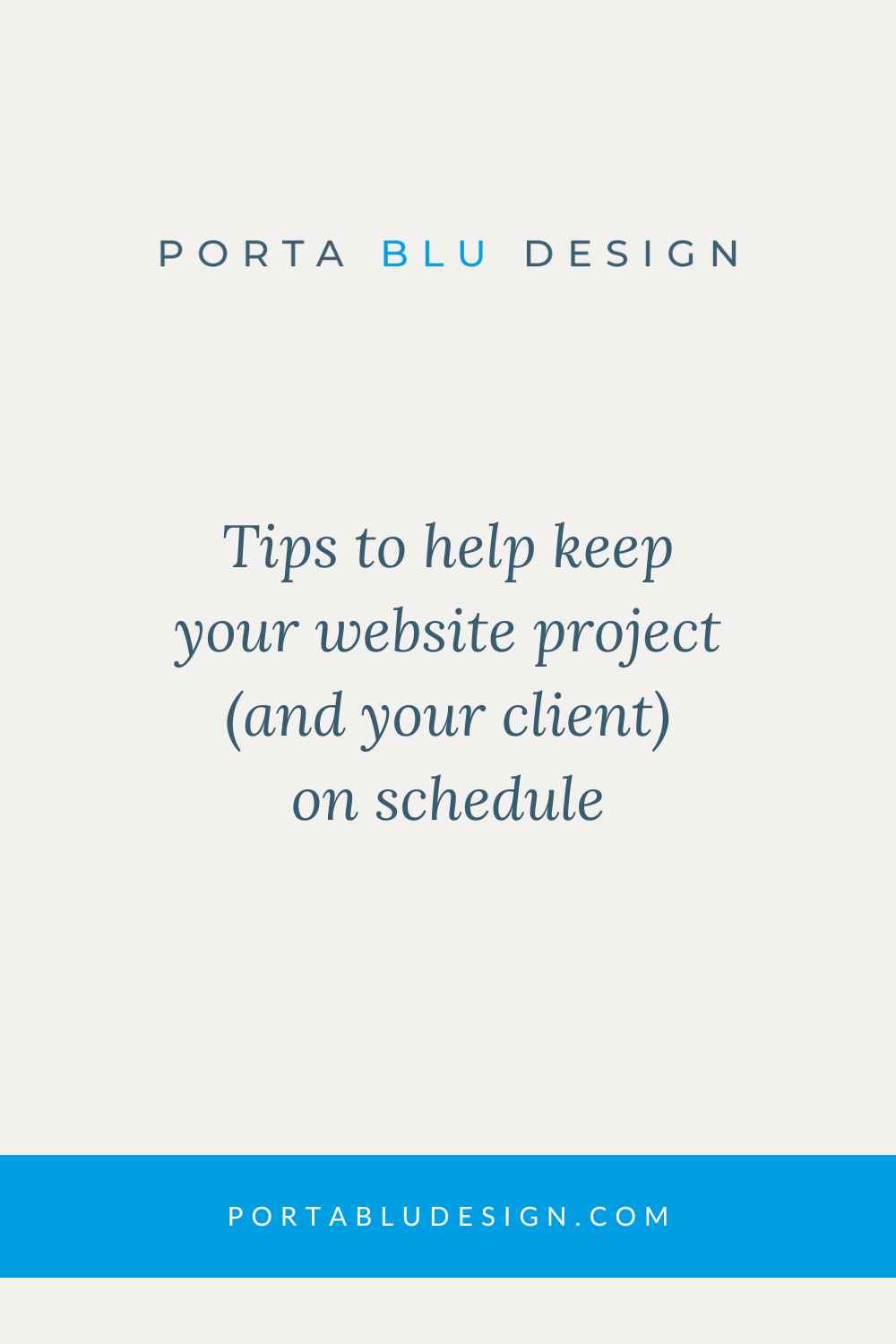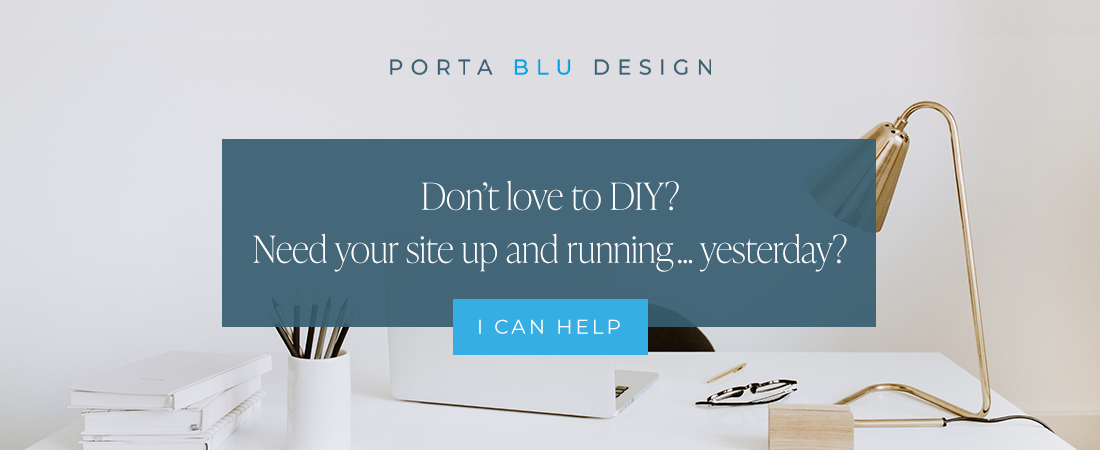3 Tips to keep your website project on schedule
Your time is valuable, and when a website project starts to drag on without an end in sight, it’s a disaster for both you and the client.
But it’s not always easy to efficiently keep things on task and on schedule.
Here are a few tips to help streamline your website process and begin to successfully start and finish client projects on schedule.
How to start and finish a website project on time
1) Know your own timing and set your time standard.
This first step will lay the foundation and set the tone for how your projects flow. I personally think it’s also the most difficult step, because it requires you to really take a hard look and analyze how you spend your time.
I start by breaking down my website process into phases (think puzzle pieces), such as on-boarding, discovery, working, and delivery. This helps me realistically determine how much time I’m devoting to each phase. This, of course, comes more easily with experience in working with clients, but do your best to estimate. Write down the hours you spend on these individual phases and this will become your time standard.
Once you have your time standard in place, think about the time you’ll allot to your client for their feedback. I generally have two rounds of edits, with about a 2-day period each from the time I present a design or development website for the client to provide feedback. Your time standard plus these “waiting periods” for feedback, will give you a good indication of how much time you need to devote to a project.
Example: Time Standard 25 hours + 4 days Feedback Waiting Period
With the example above, you are looking at roughly 2 weeks to complete a project. This 2 week period also includes some cushion time for unexpected bumps or delays along the way, which is very important. Nothing ever goes completely smoothly (your client may be late in providing content, or you’ve had to run to the dentist for a toothache in the middle of your work week) so the added cushion time is essential.
If you’re a newbie to website design projects, give yourself plenty of wiggle room and extra days on the timeline. As you complete more website projects, you’ll become much better at gauging the amount of time it takes to complete the different project phases, and you’ll have more confidence in understanding your time standard.
2. Clearly outline the website project process and deadlines.
Help your client understand the website process in simple terms, and clear up any questions about the timeline from the start so that everyone stays focused. This may be your client’s first experience working on a website or working with a designer. So you can assume they won’t automatically know what content is required for the website build or how to go about getting it to you. Provide them with an organized list, and include instructions on how to get that content to you (ie. shared Google Drive). I also like to give clients with a content planning guide that prompts them to compile the written content they’ll need on a page-by-page basis, in small bites.
Be firm about deadlines. Assure your client there will be friendly (and frequent!) reminders along the way. We all have busy lives, and they’ll appreciate these reminders, especially when their website has been successfully delivered on time and on budget.
Also include a gentle reminder that, as dictated in their contract, if their feedback isn’t returned on the set deadlines it won’t be applied to the website. This may seem harsh, however when there’s something on the line, clients are more likely to take the deadline seriously.
In this process it’s also vital that you, as the designer, are honoring the deadlines set for the project. This of course may result in a couple of late nights, but following the agreed-to timeline will assure that you’re keeping the website project on schedule for both you and your client.
I find it’s beneficial to provide a graphical representation of the entire website process - something similar to a pretty timeline - that clients can receive during the discovery phase. It helps them to visualize the process “picture” in its entirety.
3. Have a firm project “end” date and stick to it.
Confirm the website launch date with your client before the website project has started, and use that as the official finish line. This date will drive the project and keep the client’s “eye on the ball”, which will be something to look forward to and celebrate!
Some website designers add in financial repercussions for client deadlines that aren’t met, resulting in the project being pushed back. Those are details you may want to add into your client agreement or contract - again, underlining the importance of these deadlines from the very beginning.
In short, keep client communication open, frequent, and crystal clear for your website design projects.
No process is perfect, so stay organized and do some trial-and-error to see what works best for you and your business. It’s also helpful to get your client’s feedback at the project completion to see if there were any website process areas to improve. Understanding your client’s point of view is so valuable and will help you to streamline your website design process for future projects.
Do you have a great website project process that’s worked well for you? I’d love to hear about it!


